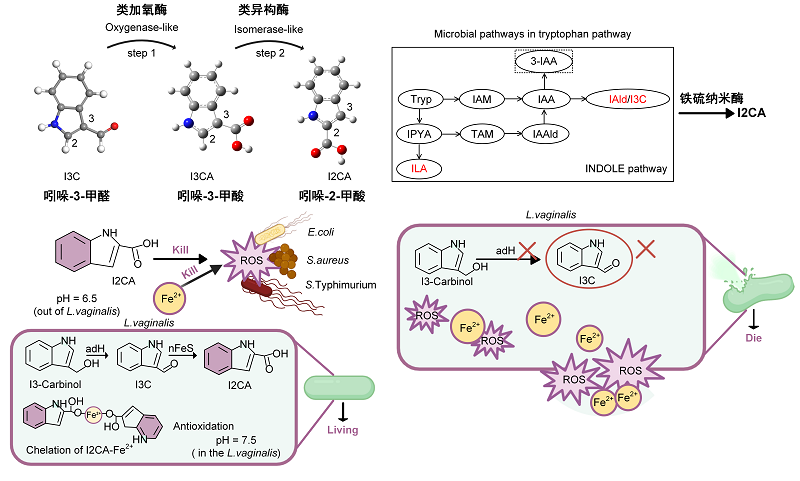
Probiotics can help suppress pathogenic bacteria by modulating the balance of the gut microbiota, making them a promising strategy for preventing and treating bacterial infections. However, they often have weak direct antibacterial activity. Therefore, identifying effective prebiotics that can work together with probiotics is a simpler and more translatable approach to probiotic-based anti-infection therapies.
In a collaborative effort, researchers from the Institute of Biophysics of the Chinese Academy of Sciences and China Agricultural University have revealed the antibacterial mechanism by which iron-sulfur nanozymes (nFeS) act on gut microbial metabolism to catalyze the production of indole derivatives, thereby synergistically combating intestinal infections in mice and pigs.
Their study was published in Nature Microbiology on November 24.
Using a combination of redox potential assays, Raman spectroscopy, Fourier-transform infrared spectroscopy, and density functional theory calculations, the researchers proposed the catalytic pathway by which nFeS generate indole-2-carboxylic acid. Ultimately, the cooperative antibacterial effect of nFeS and Lactobacillus vaginalis was validated in a pig model of Salmonella infection.
Animal experiments showed that oral administration of nFeS together with Lactobacillus reduced diarrhea incidence in pigs. In addition to Salmonella, the combined treatment significantly decreased the abundance of approximately 23 other pathogenic or potentially pathogenic bacterial species, while markedly increasing the abundance of 14 probiotic species. Histopathological analysis of the gut also demonstrated excellent biosafety.
This study highlights the strong therapeutic potential of nFeS in alleviating intestinal infections in animals. By modulating specific bacterial metabolic pathways without requiring genetic manipulation, nanozymes provide a new avenue for discovering functionally unique metabolites and developing treatments for gut infections.
Beyond expanding the known activity profile of nFeS, the study also uncovers the biochemical mechanisms underlying the tolerance of probiotics such as Lactobacillus to nFeS, laying the foundation for synergistic therapies and enhancing the ability of probiotics to promote gut health.

The schematic shows that nFeS nanozymes with oxygenase- and isomerase-like activities modulate the microbial tryptophan pathway, generating a new indole derivative (I2CA). This enables the nanozymes to synergize with probiotics, killing pathogenic bacteria and improving gut health. (Image by GAO Lizeng's group)

86-10-68597521 (day)
86-10-68597289 (night)

52 Sanlihe Rd., Xicheng District,
Beijing, China (100864)

